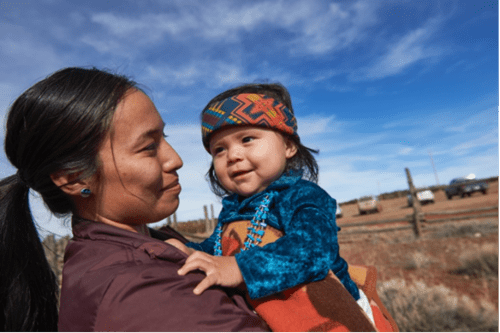
Respiratory syncytial virus (or RSV) is a common virus (germ) that causes respiratory illnesses like bronchiolitis and pneumonia. RSV infections generally occur during the fall, winter, and spring, and nearly all children will have an RSV infection at least once by their second birthday.
In older children and young adults, RSV usually causes a cough or cold-like symptoms, but in infants, especially those less than six months old, RSV infection can cause inflammation of the airways. These illnesses can be severe and may require hospitalization. Some children develop wheezing or asthma that continues for years after the RSV infection is over. Rates of RSV in American Indian and Alaska Native (AI/AN) children have historically been very high. One in 10 Native American babies in the southwest United States will be hospitalized with RSV each year.
There is no licensed vaccine to prevent RSV in children or adults, but many are in development. There is one product, a monoclonal antibody called Synagis, that can be given to some very premature and high-risk infants to help prevent RSV, but nothing is available for healthy, full-term children.
It is important to understand where RSV is occurring and when, to help design ways of preventing disease. The Centers for Disease Control and Prevention (CDC) funds a national study to monitor RSV disease in 7 sites across the United States, but none of these sites include areas that are predominantly AI/AN. Understanding the amount of disease is critical to identify the best ways to reduce disease in Native American communities.
The RSV-SuNA study will conduct RSV surveillance on the Navajo Nation, White Mountain Apache Tribal Lands, and in Alaska. RSV SuNA will enroll children under 5 years of age and pregnant women who come to the clinic or hospital with respiratory infections. People who consent to be in the study will have a swab collected from their nose. This swab will be tested for respiratory germs, including RSV. Study staff will administer a questionnaire to understand if participants have risk factors for RSV and will perform a chart review to assess underlying conditions.
Results of this study can be used by the Tribes to understand the burden of RSV and to guide use of future interventions, such as vaccines, to improve the health of the population.